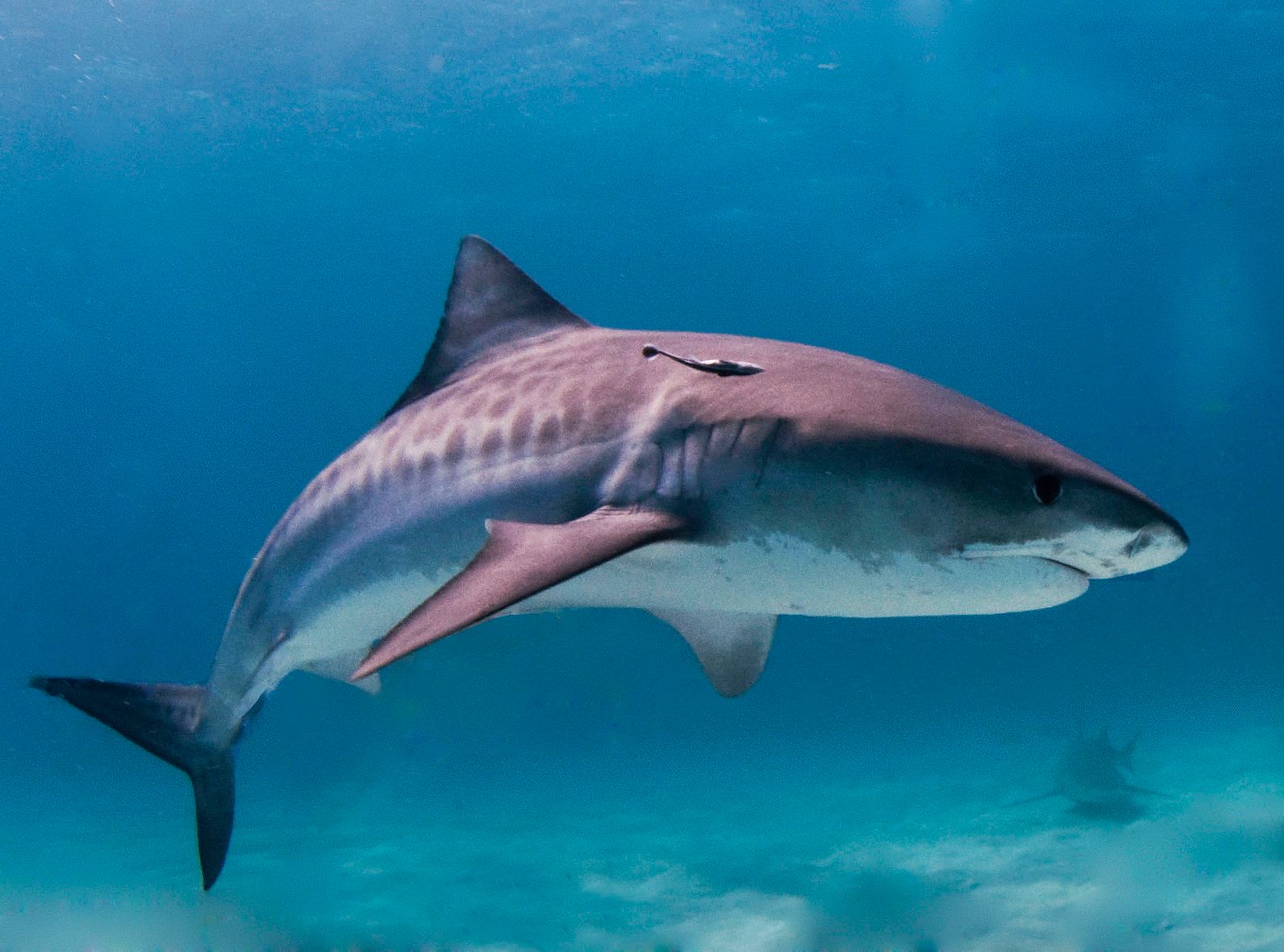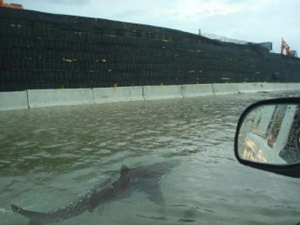
Last time, we looked at what happens with marine organisms that can’t move to get away from hurricanes, particularly coral reefs and oyster beds. Now, we’ll examine some more mobile species, looking at several iconic marine vertebrates.
Doo Doo, Doo Doo Doo Doo
Likely the most iconic group of marine fish is the sharks. Unfortunately, much of their publicity is negative because of movies like ‘Jaws’ and its various film successors. I could go on a lengthy rant about how unrealistic monster animal movies are in their portrayals of behavior (and the reptile-based films are as bad as the shark attack ones), but we can save that for another time. Despite their portrayal as vicious, sharks fill a variety of important ecological niches from apex predator, to filter feeder, to scavenger. We have at least 15 species in the waters off of Florida, and many others in places that are just as susceptible to tropical cyclones.

In the past, there has been anecdotal evidence of sharks migrating to deeper waters in anticipation of an approaching hurricane. The idea that sharks can sense such a storm from far away is not too surprising considering the phenomenal array of sensory perception they possess. These include highly tuned chemical receptors that can detect minute traces of scents (such as blood for predatory sharks) and the ability to sense electromagnetic fields. For storms, the most likely organ used is the lateral line system. This is present in most fish and provides the ability to sense nearby motion and vibrations underwater. It also acts as a pressure sensor, meaning that sharks, and fish in general, could be able to detect the accompanying changes in barometric pressure of a hurricane.
Recently, researchers at the University of Miami conducted some extensive surveys of several shark species and were tracking their movements with transponders when a hurricane swept through their study area. Further research in regards to storm response showed similar results. Hurricanes cause a lot of wave action, but there is a limit to how deep the effects are. At greater depth, the sea can be calm regardless of the winds raging over the surface. Many of the smaller species of sharks would seek such a refuge when a storm approached. However, larger species like the tiger shark, Galeocerdo cuvier, actually remained in shallow water during the storm and more individuals arrived there after it had passed. It seems that these larger individuals were better able to handle the rough conditions. The researchers speculated that the disturbance and destruction of a hurricane might increase opportunities for scavenging dead organisms.
I Want to Believe
In recent years, there has also been a trend of reporting sharks swimming inland after a hurricane or other coastal flooding event. Perhaps the most famous image of a ‘hurricane shark’, which still gets recirculated to this day and attributed to various different storms, was posted after Hurricane Irene in 2011. In truth, this is a composite creation, overlaying a photograph of a shark with one of a flooded area. Many others have been created since.

Of course, a massive storm like Hurricane Ian couldn’t go by without its own version. However, unlike many of the previous hoaxes, this was a video recording and not just a still image.
The video has been confirmed as authentic, but it’s difficult to identify the fish depicted. It might be a shark, but there is some speculation that it might be a cobia, Rachycentron canadum, a marine fish known to sometimes enter estuaries or perhaps a nonnative freshwater fish sometimes called an armored catfish, Hoplosternum littorale. Regardless, most sharks are obligate saltwater organisms and would not be comfortable for long in the mixed environment such flooding creates. The exception is the bull shark, Carcharhinus leucas, which we do have in Florida and has been known to swim up rivers. That said, it’s much more likely for sharks to be swimming away from shore when a hurricane arrives rather than towards it.
You Have to Breathe Sometime
Unlike fish, marine mammals need to periodically return to the surface to breathe. Because of this, the strategy of moving to deeper waters may not always work for them. Most cetacean research is done at the surface of the water and storm conditions make such work difficult or even impossible.
Still, we can observe their behavior after a storm has passed through and there are definite changes to feeding patterns and frequency of, for example, dolphins after major storms, most likely in response to the affects of the hurricane on their prey species. High levels of storm surge can lead to stranding events as the force of the water pushes marine mammals up onto the beach.
Manatees are shallow water animals, the seagrass they eat can’t grow at depth, and they can only hold their breath for about 20 minutes when at rest (shorter when they are more active). Of course, unlike a dolphin or whale, they are able to swim up rivers to get away from a hurricane. While this protects them from the worst of the wave action, they are still vulnerable to storm surge as well. The water can push them places that they are then unable to escape from after it recedes.
A Stormy Shellebration
I’ve already covered the affects of hurricanes on sea turtle nests, but what about larger turtles out in the ocean? Much like with sharks, a passing hurricane over a group of turtles already being tracked allowed for an examination of their behavior patterns. This was a group of juvenile loggerhead turtles, Caretta caretta, off the coast of Delaware and New Jersey. The turtles moved north in response to the storm and aligned themselves with the surface currents, possibly in an attempt to conserve energy and not be constantly swimming against those currents as it passed.
Behavior patterns changed after the hurricane, showing increased dive durations. It is possible that the storm fundamentally altered this foraging area. If food became more scarce it might account for the need for longer dives. Also, the turtles began migrating south more than a month earlier than normal. The migration is done in response to cooling ocean temperatures later in the year. The hurricane may have accelerated this locally through the heat transfer from the ocean to the atmosphere (similar to how this shift affects corals).
Conclusions
Overall, it’s much more difficult to study the behavior of mobile marine species than sessile ones (or any kind of terrestrial organism). Therefore, our understanding of hurricane impacts on them are much more tentative. However, the general pattern seems to be a movement towards the area that provides the most security and least stress for each species. On occasion, some contradictory behavior occurs, such as with tiger sharks, but there is always a reason for it. In nature, there are always trade-offs. Staying put is riskier, but a larger shark can handle it more easily and is then in position to take advantage of a potential increase in food availability.
Next time, we’ll continue our ocean voyaging and look at the effects of hurricanes on mobile invertebrates.